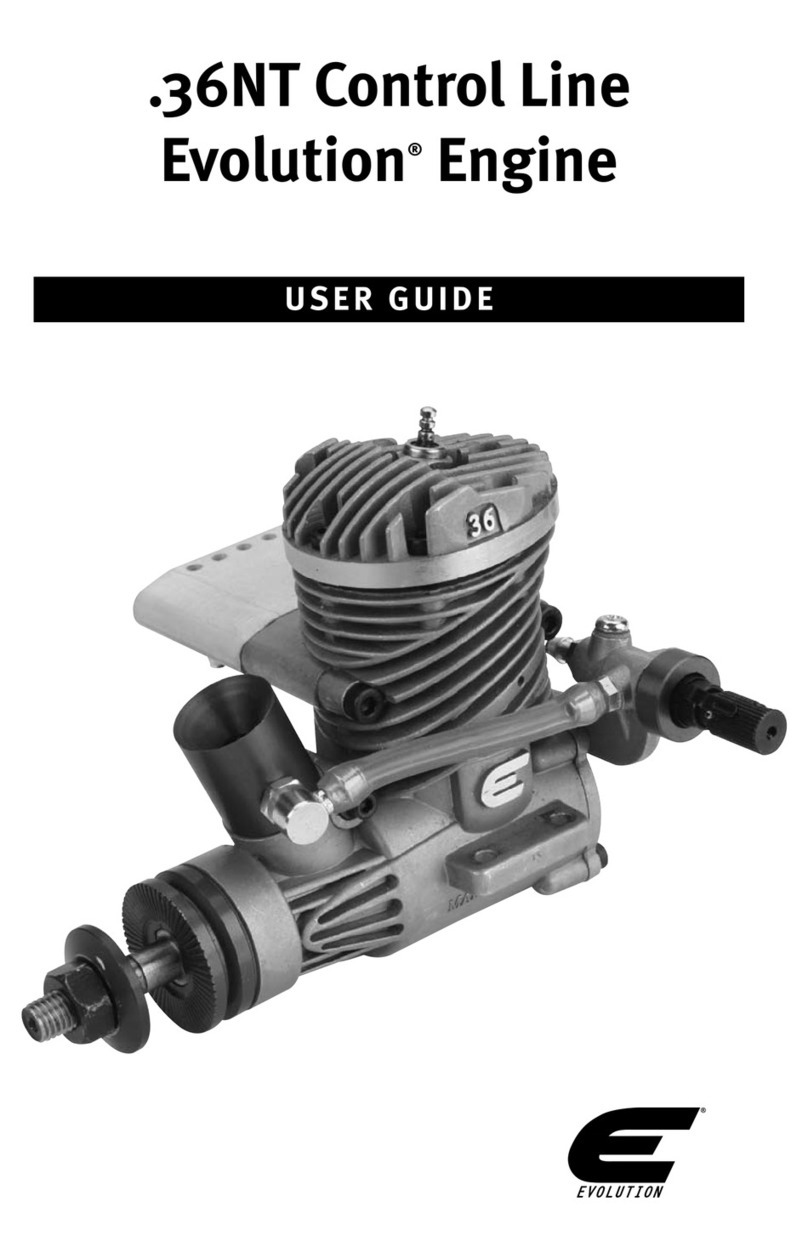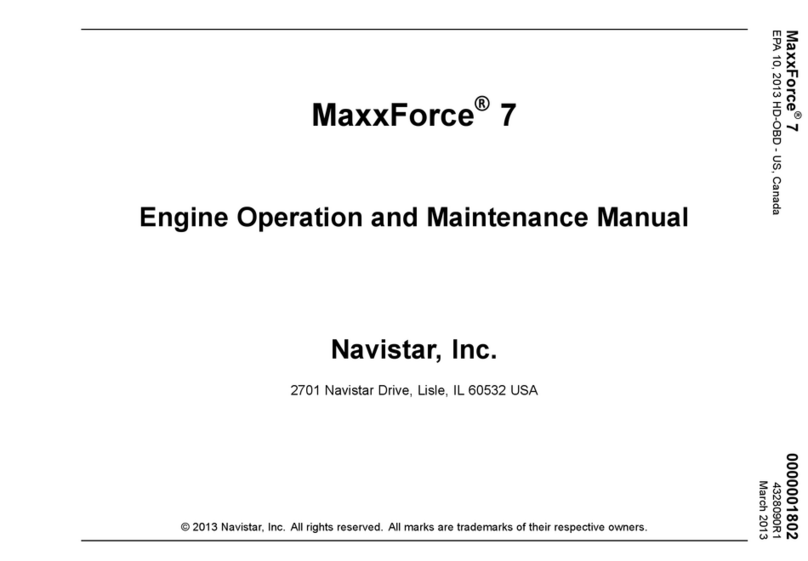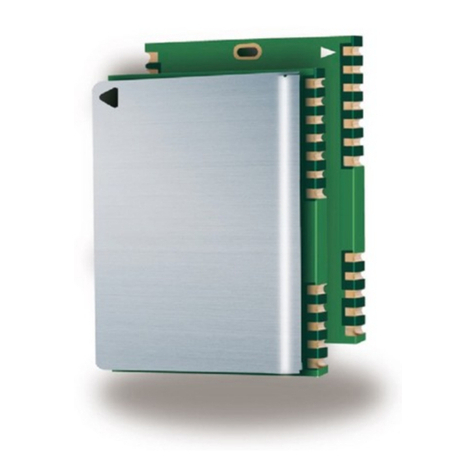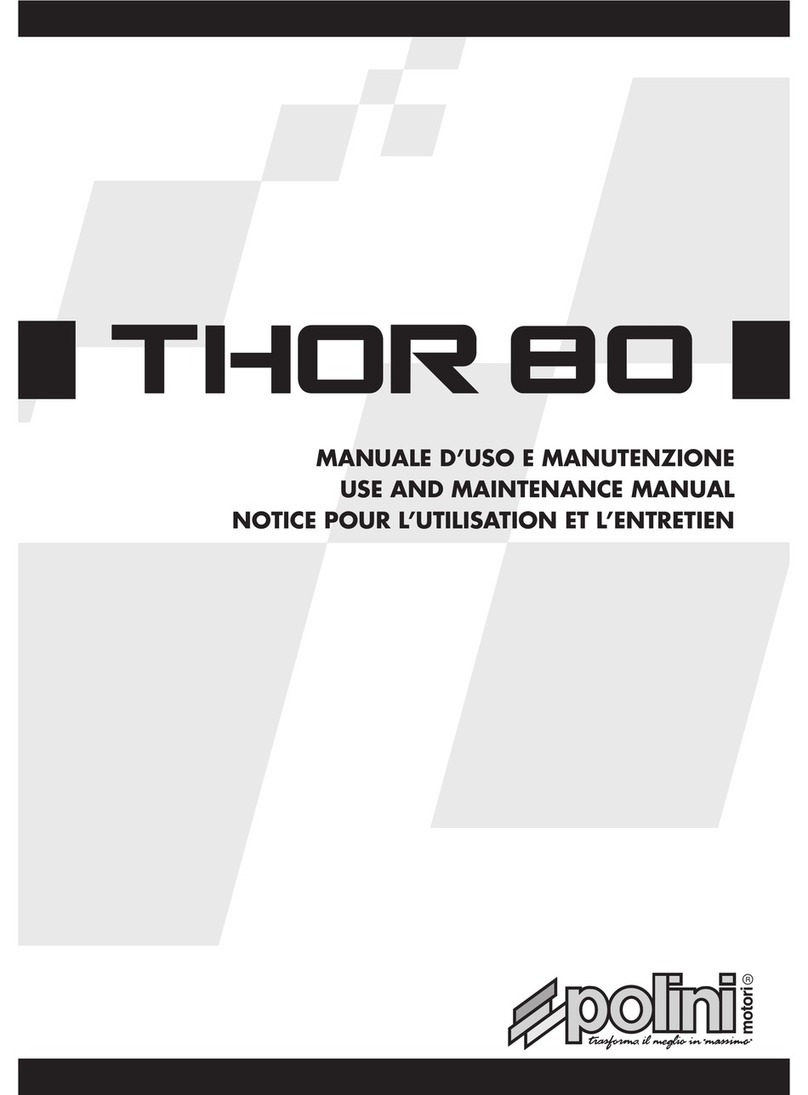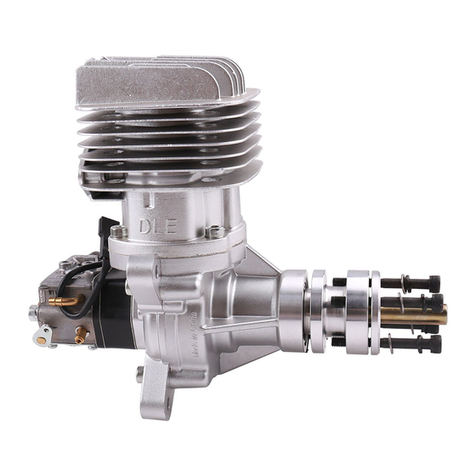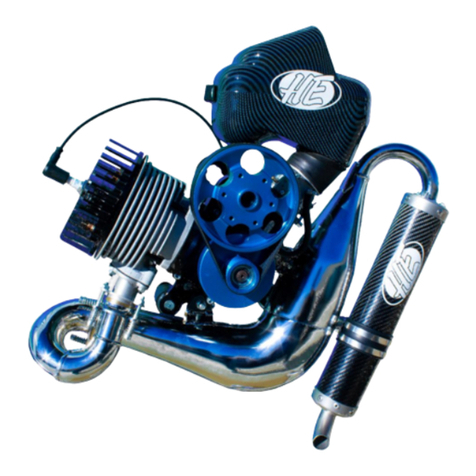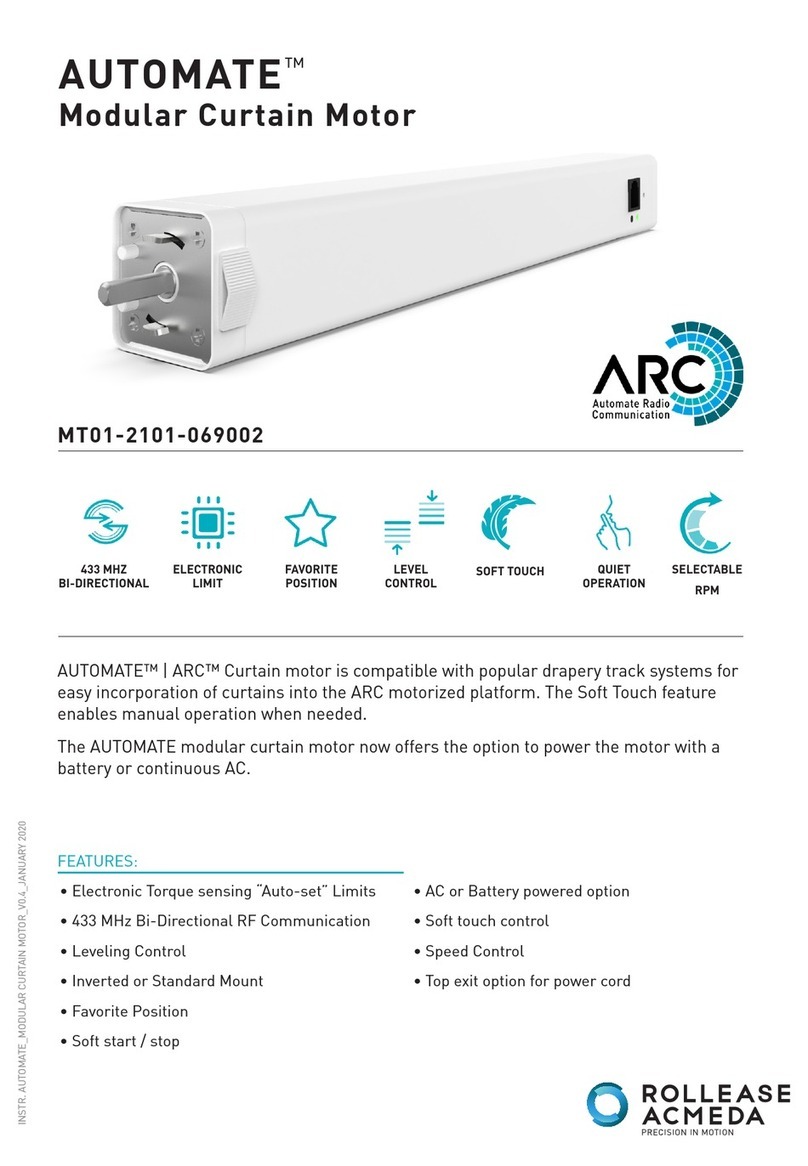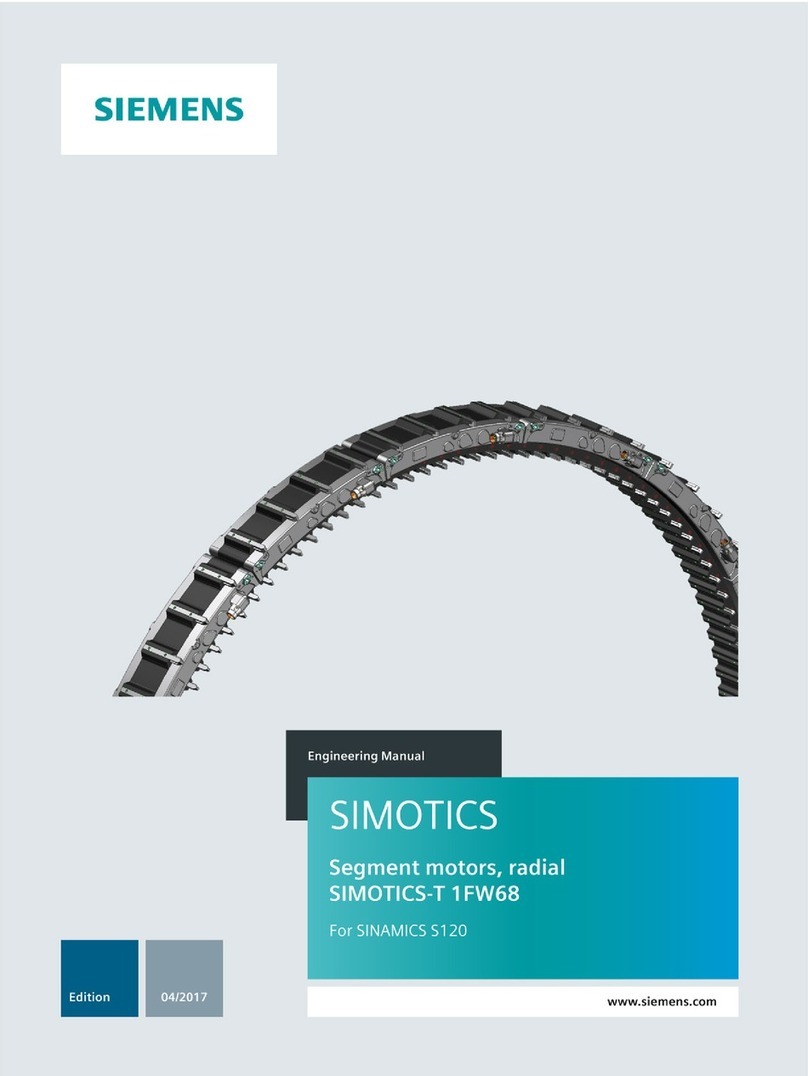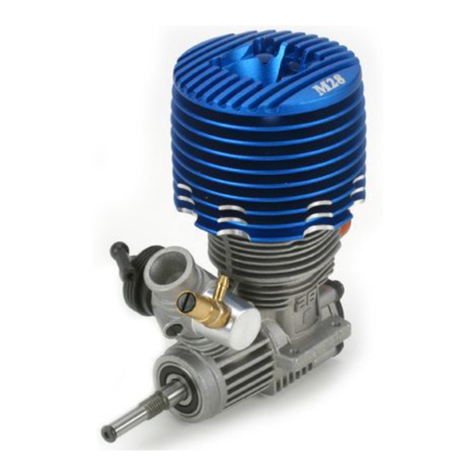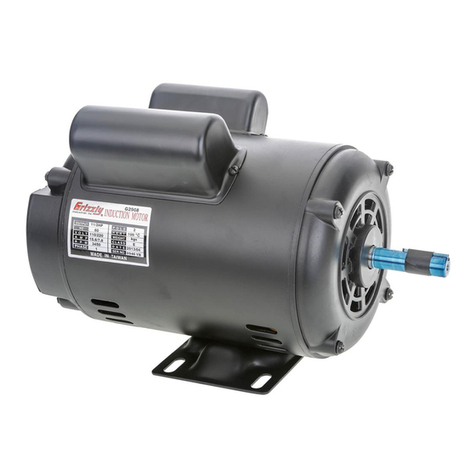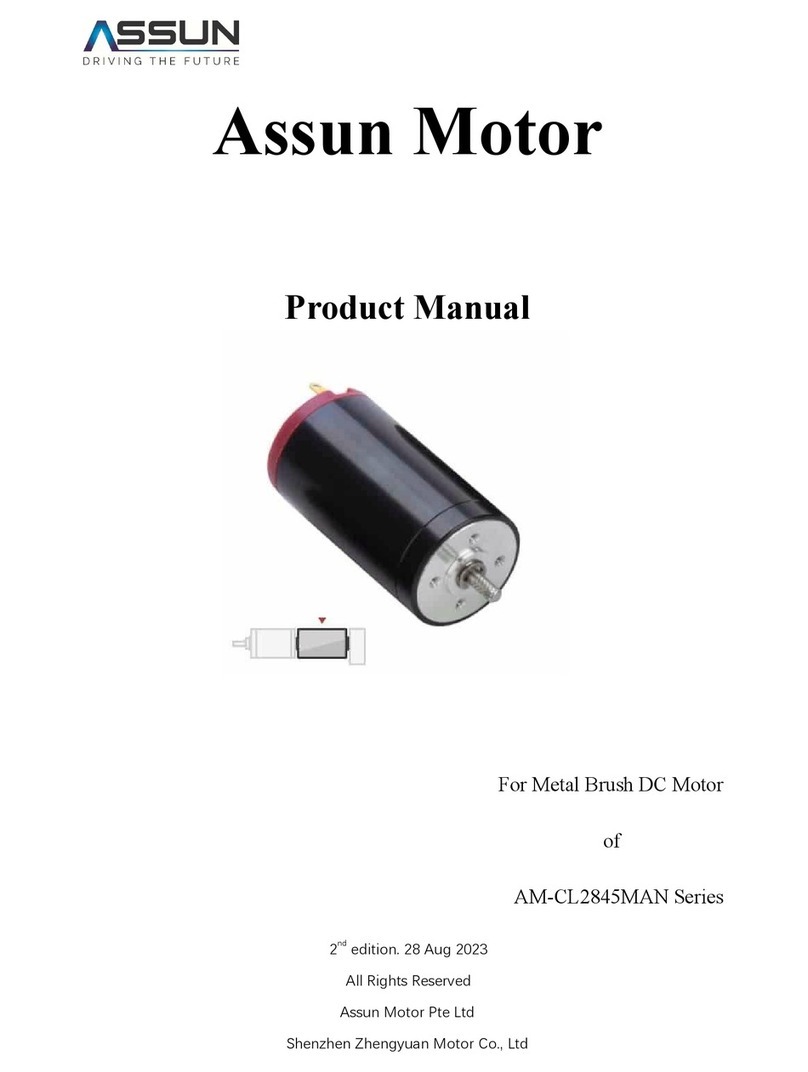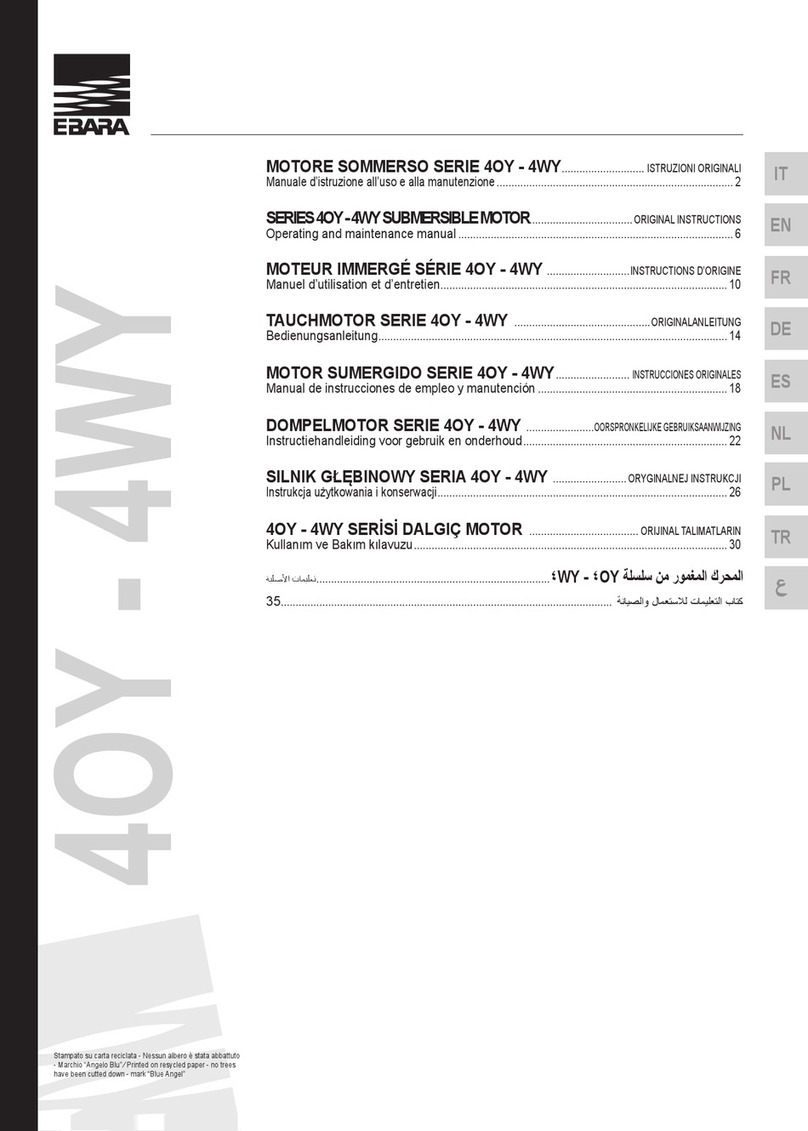Evolution Technologies 58GX2 User manual

Evolution Engines
45GX2/58GX2
USER GUIDE
8103.3_EVO_4558.manual.indd 1 6/16/06 10:23:12 AM

2
Introduction
Congratulations on your purchase of the newest and one of the most technically advanced 2-stroke gas model airplane engines in
the world. Whether you are new to the sport of model aviation or an experienced flyer, you will enjoy the features of the new Evolution®
GX engine.
Evolution engines are designed to be the most powerful in their class, extremely easy to start and operate, and provide years of
enjoyable service. These engines incorporate many unique features designed to ensure success with your new engine.
This user’s guide is intended to provide the basic information required to operate and maintain your Evolution GX engine.
Important: While the Evolution engine is extremely easy to operate, if this is your first experience flying a model airplane, it is highly
recommended that you have the help of an experienced modeler during the first few flights. Your local hobby shop or flying club can put
you in touch with an experienced pilot in your area.
Before using this engine, please read these instructions carefully.
Evolution®Engines 2-Year Warranty
This Evolution Engines product is guaranteed to be free from
defects in materials and workmanship for a period of 2 years
from the date of purchase by the original owner. This war-
ranty is not transferable. Horizon Hobby reserves the right
to inspect any and all equipment involved in a warranty
claim. Repair or replacement decisions are also determined
by Horizon Hobby, Inc. Collateral damage of any type is not
covered under this warranty.
This warranty does not cover any component parts damaged
or changed by modification. In no case shall Horizon Hobby
or Evolution Engines liability exceed the original cost of
the engine.
This warranty does not apply to wear from normal use;
damage or defects resulting from misuse, neglect or abuse;
damage caused by customer disassembly, use of substan-
dard fuel, use of incorrect accessories (spark plug, propeller,
etc.); or damage resulting from a crash, or any use of this
engine other than for which it is specifically intended. Any of
the above will automatically void the warranty of the engine.
In that Horizon Hobby has no control over the final installation
and use of this product, the materials used in installation,
or the product in which this engine is installed, no liability
shall be assumed nor accepted for any damage resulting in
the use of this product once it is installed. By the act of using
the installed product, the user accepts all resulting liability.
If the buyer is not prepared to accept the liability associated
with the installation and/or use of this product, the buyer is
advised to return the engine immediately in new and unused
condition to the place of purchase.
Should your engine require warranty or non-warranty repair
service, please package it carefully and return it to the
address below, along with a copy of the original invoice or
receipt and a detailed letter explaining the problems. Write
your name, address and daytime phone number clearly on
the letter and return it via FedEx, UPS or insured Parcel Post
(Evolution Engines will not be responsible for product lost
en route).
For repairs not covered under warranty, please specify in your
letter whether you want an estimate of the repair charges
prior to performing the service (which may cause a slight
delay). Payment for non-warranty repairs should be made
by credit card or money order. If you have any questions con-
cerning this or other Evolution products please contact the
Horizon Product Support Team at 877-504-0233.
Evolution/Horizon Service Center
4105 Fieldstone Road, Champaign, IL 61822
877-504-0233
productsupport@horizonhobby.com
8103.3_EVO_4558.manual.indd 2 6/16/06 10:23:12 AM

3
Mounting the Engine
Most model airplane designs make provision for an engine
mount. It is extremely important that the engine mount be
securely attached to the airplane’s firewall and that the engine
is securely attached to the engine mount. Follow the instructions
included with the airplane for mounting the engine. The engine
should be fastened in place with 4 screws. Use 1/4” or 6mm
screws. If you decided to fasten the engine using a flexible motor
mount, always choose parts with enough solidity and strength.
Make sure all screws are tightened and regularly check that they
remain tight and in good condition.
Important: Air is necessary to cool the engine during operation.
Make sure that sufficient air circulation through the cowling is
provided. As a basic reference, the outlet area should be 3–5 times
the area of the inlet area to provide adequate cooling.
Throttle Linkage
Carefully attach the throttle linkage to the engine using a ball
link on the carburetor. Make sure that the linkage is free to
operate from low throttle to high throttle and confirm that the low
throttle setting on the transmitter closes the carburetor butterfly
to the low idle position. Adjust the length of the pushrod until full
throttle opens the carburetor butterfly fully, while low throttle, low
trim completely closes the butterfly.
Attaching the Fuel Lines
Use medium gasoline-compatible fuel line in the fuel tank as
well as the supply line to the engine.
Fuel for the Evolution Gas Engine
The Evolution gas engine has been designed to run on a mixture
of high-quality unleaded gasoline and synthetic oil intended for
racing 2-stroke gasoline engines. For the break-in period of the
new engine, mix the fuel in a ratio of 30 parts gasoline to 1 part
lubricant. After break in, use a ratio of 40 parts gasoline to 1
part lubricant.
Selecting a Suitable Propeller
The Evolution 45GX and 58GX have been designed to generate
maximum power at 6100–6300 rpm, according to the type
of exhaust used. If you wish to utilize the maximum power
output, choose a propeller which will allow the engine to reach
these revolutions, or slightly lower revolutions (The engine will
unload in the air depending on the aircraft speed and propeller
selected).
We do not recommend using propellers that allow the engine to
reach more than 7500 rpm on the ground.
Suggested Propeller Dimensions
These engines (45GX2 and 58GX2) are designed for optimum
performance and torque when operated between 6100–6400
rpm. Choose your propeller according to the chart and to achieve
approximately 6300 rpm on the ground for best performance
and the lowest noise signature. Maximum horsepower occurs
between 7200–7400 rpm, but expect much higher propeller
noise at these tip speeds.
45GX
58GX
Aerobatics
Two-blade
Three-blade
Two-blade
Three-blade
Scale flying
22x10
26x8 26x10
21x10
24x10
24x12
22x8 23x8 23x10 24x8 24x10
21x12 22x8 22x10
22x12 24x9 24x10
24x8 24x9 24x10 24x12
25x7 25x8 25x9 25x10
26x7 26x8 26x9 26x10
25x12
8103.3_EVO_4558.manual.indd 3 6/16/06 10:23:13 AM

4
Starting the Engine
The new Evolution Engine carburetor comes adjusted to a
basic setting. This setting should be maintained during the
initial break in runs.
Before you first start the engine, make sure that the spark
plug is screwed in and tightened and that the plug socket
is fitted in place and fastened down properly. Fix the ignition
sensor in the proper position above the magnet with the
screws enclosed. Follow the directions in the Ignition System
addendum to program the ignition module in your model.
Important: Never turn the engine over with the ignition turned
on unless the spark plug is inserted in the plug socket. This
could lead to ignition damage.
Fuel for the Evolution Gas Engine
The Evolution®Gas engine has been designed to run on a mixture of high-quality unleaded gasoline and synthetic oil intended for racing
2-stroke gasoline engines. For the run-in period of the new engine, mix the fuel in a ratio of 30 parts gasoline to 1 part lubricant. After
run-in, use a ratio of 40 parts gasoline to 1 part lubricant.
Carburetor Adjustments 45GX
Basic setting: Adjust needle (L) for low rpm range 2 turns.
Adjust needle (H) for high rpm 1 turn and 30 minutes.
Carburetor Adjustments 58GX
Basic setting: Adjust needle (L) for low rpm range 1 turn and 45 minutes.
Adjust needle (H) for high rpm 1 turn and 45 minutes.
Air Pressure Inlet
Adjusting Needle L
Adjusting Needle H
Choke Lever
Pressure Inlet
58GX Carburetor Shown
Starting With Easy Start Feature
1) Make sure the ignition switch is on and the throttle is set at a slightly high idle setting. Be sure to have a helper hold the model
securely. The Easy Start feature will have the choke closed at this time. Give the propeller a few quick flips. If the engine starts, the
Easy Start system will automatically open the choke, and modulate its position as necessary to keep the engine running until warm.
2) If the engine does not start immediately, please note the following:
a) The Easy Start System will keep the choke closed for the first 4 flips of the propeller, then;
b) The choke will go to a half-open position for the next 4 flips of the propeller, then;
c) The choke will be fully opened for the next 4 flips of the propeller, then;
d) The Easy Start system will start the entire sequence over again by closing completely the choke.
3) The above steps assure a situation that will not flood the engine, and allow for easy starting procedures, whether it is your first, or
your tenth, flight of the day.
8103.3_EVO_4558.manual.indd 4 6/16/06 10:23:13 AM

5
Starting Without Easy Start Feature
1) When you are ready to start your engine, make sure that the
ignition is switched off, the choke valve is closed and the
throttle valve is partly open. Confirm that fuel is filling the
fuel line to the carburetor then switch the ignition to the on
position. Flip the propeller smartly until the engine fires. With
the choke in the closed position, the engine will fire then quit.
2) Open the choke valve and set the throttle at a slightly high
idle position. Be sure to have a helper hold the model securely.
Give the propeller a few quick flips. When the engine starts,
allow it to idle for 30–45 seconds in order for it to warm up
to operating temperature. At this point you can proceed to
test the carburetor settings before flying your model. See the
following section regarding carburetor adjustment.
3) If the engine does not start, leave the throttle at the high idle
position, turn the ignition off, then on and close the choke
valve. Start the engine with throttle at the fast idle position
and the choke valve closed. The engine should fire and quit. If
it does, repeat step 2 above.
4) At this point, if the engine still will not start, unscrew the
spark plugs and check the contacts. Clean any possible
excess fuel (i.e. an indication of engine flooding) and screw
them in again. Further starting should only be done with the
throttle at idle position and the choke in the open position. If
the plug is dry, then probably not enough fuel has been drawn
into the carburetor. If that is the case, check for proper fuel
feed and then return to the instructions given in paragraph 1.
Starting the Engine Continued
Having started the engine, leave it running for about 5 minutes at a higher idle speed. Then run it for about 20 minutes, while
changing revolutions from idle to 1/2–3/4 of the range and shortly holding each position—gradually prolong the holding periods. After
10 minutes of operation, open the throttle to maximum for a period of about one minute. At this point, stop the engine and let it cool
down. Then restart it and check the adjustment. If everything is all right, you can make your first flight. During the first few flights. do
not overload the engine and do not let it run at high revolutions for long periods of time (very important during hot weather). Use up all
the fuel that was mixed with the oil that is included with your engine. From then on, fuel and oil should be mixed in the proportion 40:1.
Carburetor Adjustment
First, start and warm the engine for 30–45 seconds before attempting to adjust the carburetor. In order to confirm that your engine is
properly adjusted, you should follow the procedure below.
1) Move the throttle from idle to 2/3 of the full throttle position quickly (fast acceleration). Then repeat three times – if the engine accelerates smoothly, go to
step 3 below. If acceleration is not smooth, go on to step 2.
2) Faulty acceleration and a tendency to quit is usually attributable to a poor fuel mixture in the medium rpm range. Stop the engine and recheck the fuel
feed (the fuel line must not be pinched or broken). Restart the engine and test acceleration again. If the problem persists, adjust the carburetor. Open
the low speed needle by 1/8 turn and retest. If acceleration is smooth, open the needle by another 1/8 turn—this should be done because the needle was
previously set too lean; if atmospheric conditions have changed recently you may have to readjust the needle. If the engine continues to not accelerate
properly, open the low speed needle by 10 minutes. If the engine’s operation does not improve, shut it off and check the basic setting, restart the engine
and test the acceleration. If the engine runs correctly, go to step 3. If it continues to not accelerate properly, open the low speed needle by another 10
minutes. If acceleration is faulty, the defect is likely to lie somewhere other than an incorrect adjustment.
3) If the engine accelerates correctly, according to the above test, set it at idle speed and accelerate to full speed. Repeat twice more. If the engine functions
correctly, go to step 4. If it cuts out, open the low speed needle by another 1/8 turn more.
4) If the engine reacts correctly set it at full speed. If revolutions do not drop, the engine has been adjusted successfully. If revolutions seem to drop, open the
high-speed needle by approx. 5–10 minutes.
Caution! The engine must be stopped while you adjust the carburetor in order to prevent injury by the propeller.
8103.3_EVO_4558.manual.indd 5 6/16/06 10:23:14 AM

6
If the engine does not start
-
check and use a new spark plug if needed.
(Check the spark: Put the plug into the cable end and by turning
the engine you’ll see the necessary spark. Note: The plug must
touch a metal part of the engine.)
- check fuel lines.
- check for proper mechanical function by turning the
engine over.
- check that the carburetor is correctly installed.
- remove the carburetor cover from the feed side; check
the filter and blow off carburetor with compressed air
(Caution: When using compressed air, use eye protection.);
when re-assembling be
careful to maintain the proper order of
the components.
- check the vacuum feed line.
Mechanical Faults
If the engine can not be turned over easily
- a likely cause is the piston in the cylinder is seized: loosen
and unscrew the cylinder bolts.
- carefully remove the cylinder.
- visually examine the piston and crankcase to find the likely
cause of the engine’s mechanical problem.
Note: Mechanical repairs must always be completed by a
professional service department.
Troubleshooting Guide
Engine Specifications
Bore
Stroke
Displacement
Weight without ignition*
Weight of ignition unit
RPM range
38mm
38mm
45cc / 2.6 cu in
1290 g / 45.5 oz
165 g / 5.8 oz
1000–7500 rpm
Maximum power output**
Maximum torque**
Gasoline
Lubrication
5.2 hp / 6200 rpm
4.2 ft-lb / 6100 rpm
Unleaded 95-octane
Oil w/gasoline
in mixture 1:40
* The value in the table above stands for the weight of a completely assembled engine, including the spark plug, carburetor,
drive washer and prop screws.
** Power output varies with the exhaust used. The value given in the table stands for the maximum available power output.
Bore
Stroke
Displacement
Weight without ignition*
Weight of ignition unit
RPM range
42mm
42mm
58cc / 3.6 cu in
1820 g / 64.2 oz
165 g / 5.8 oz
1000–7500 rpm
Maximum power output**
Maximum torque**
Fuel
Lubrication
8.5 HP / 6950 rpm
5.1 ft-lb / 6400 rpm
Unleaded gasoline
Oil w/gasoline
in mixture 1:40
58GX2
45GX2
8103.3_EVO_4558.manual.indd 6 6/16/06 10:23:14 AM

7
45GX2 Evolution Engine Dimensions
A
180mm
C
71mm
E
78mm
G
M10x1mm
B
122mm
D
78mm
F
6.6mm
H
55mm
58GX2 Evolution Engine Dimensions
A
190mm
C
75mm
E
78mm
G
M10x1mm
B
140mm
D
78mm
F
6.6mm
H
55mm
8103.3_EVO_4558.manual.indd 7 6/16/06 10:23:16 AM

8
Evolution Engines Easy Start Ignition System
The spark ignition included with your Evolution®gas engine is a modern generation electronic ignition. There are many useful
functions built into the microprocessor of this unit.
In addition to the basic ignition functions, the unit has a FAIL-SAFE feature: After 90 seconds of inactivity it automatically switches to
an inactive state. In order to restart normal operation, it is necessary to turn the battery switch off and then back on. This function will
preserve battery life should the switch be left in the on position during inactivity.
Installation of the Easy Start Ignition Unit
While installing the ignition unit in your model, be careful to have all parts that are connected to the unit and the engine
situated as far as practical from the radio receiver and radio antenna. The throttle servo should be mounted a distance of
8–12 inches from the engine. The spark plug cable must not touch any part of the model structure as vibration may damage
the cable. If this is not practical, it will be necessary to provide an insulation material for the cable. The ignition unit itself
should be wrapped in foam rubber to prevent engine vibration from damaging the electronics. All components must be
protected from contact with engine fuel.
<box 1>
1 – Ignition,
2 – LED,
3 – Programming cable
(version S and P).
<box 2>
ICU – L (Light) 6 – 8.4V
ICU – S (Standard) 6 – 8.4V
ICU – P (Professional) 9 – 13V
<box 3>
Connect LED indicator to the ignition box (red/black wire to +).
<box 4>
Using the included connector, plug your battery pack into the ignition box.
Five seconds after connecting the battery, the LED indicator should go out. If the LED is blinking after you connect the battery, this is an indication the battery’s voltage is too low.
<head>Programming "Easy Start" Function and Pre-ignition Curve
<box 6>
Disconnect the ignition system’s battery.
Connect the LED indicator.
Connect the throttle potentiometer outlet to the throttle channel on your receiver.
<box 7>
Connect the auto-choke servo to the ignition box (black or brown to “-“ pin).
Technical data
Weight 155 g
Power supply 2x Li-lo/Li-Po
6x Ni-Cd/Ni-MH
Pre-ignition point 5º
Location of the magnet 240º / 120º
Minimum battery capacity 600mAh
Other features
Easy Start function
Choice of pre-ignition curve
Customizable pre-ignition curve*
Sleep mode after 90 seconds of engine inactivity
Battery level signalization
Ignition goes off if engine runs counterclockwise
*will be released later
LOW
BATTERY
SLEEP
MODE
SHORT
SILENCER
LONG
SILENCER
0
100 ms
200 ms
300 ms
400 ms
500 ms
600 ms
700 ms
800 ms
900 ms
1 sec
1.1 sec
1.2 sec
1.3 sec
1.4 sec
light
dark
LED Blinking Patterns
1Ignition
2LED
3Programming cable
ICU–S 6–8.4V Connect LED indicator to the ignition
box (red/black wire to “+”).
Using the included connector, plug your
battery pack into the ignition box.
Five seconds after connecting the bat-
tery, the LED indicator should go out.
If the LED is blinking after you connect
the battery, the battery’s voltage is
too low.
1
2
3
LED
8103.3_EVO_4558.manual.indd 8 6/16/06 10:23:29 AM

9
Programming Easy Start Function and Pre-Ignition Curve
Warnings
Always do a range check with the engine running before the first flight. Use the ignition only in dry conditions. Use recommended number and type of cells for each ignition
type. This product is specified for RC engines only. Do not remove the resister cover if the ignition is on.
WARNING: DANGER OF ELECTRIC SHOCK (VOLTAGE OVER 20,000V).
WARNING: The manufacturer is not responsible for damages caused by not following the manual and/or use with anything other than RC engines.
WARNING: Because of possible interference, ignition and accumulators should be placed at least 25 cm from the receiver.
CAUTION: Use a standard servo with a current draw of less than 1.5A to operate the choke. Servos with a current draw greater than 1.5A, such as micro servos, digital servos
and high-torque servos, consume more current than the ignition system's circuitry is designed to provide. If the servo you've connected quivers or won't work at all, its current
draw is probably too high.
1Ignition
2LED
3Programming cable
4Ignition battery
5Transmitter
6Receiver
7Receiver battery
8Servo
7
1
2
3
4
5
6
8
ShortSilencerChokeSettings
(e.g.,PittsStyle)
1)Usingthethrottlestick,closethechoke
untilitclosescompletely.WaituntiltheLED
blinksonce,indicatingtheignitionhas
memorizedthe“closedchoke”position.
2)Usingthethrottlestick,openthechoke
valveuntilitisallthewayopen.Waituntil
theLEDblinksonceindicatingtheignition
unithasmemorizedthe“choke
open”position.
3)Movethechoketotheclosedposition
andholdthereforanadditional5
seconds,andtheLEDwillblinkrap-
idly,indicatingthattheShortSilencer
Preignitionprogramhasbeenset.
4)Disconnectthereceiver.
LongSilencerChokeSettings
(e.g.,CanisterorTunedPipe)
1)Usingthethrottlestick,closethechoke
untilitclosescompletely.WaituntiltheLED
blinksonce,indicatingtheignitionhas
memorizedthe“closedchoke”position.
2)Usingthethrottlestick,openthechoke
valveuntilitisallthewayopen.Wait
untiltheLEDblinksonceindicat-
ingtheignitionunithasmemorized
the“chokeopen”position.
3)Leavethechokeopenforanadditional
5seconds,andtheLEDwillblinkslowly,
indicatingthattheLongSilencerPre-
ignitionprogramhasbeenset.
4)Disconnectthereceiver.
Connect the auto-choke servo to
the ignition box (black or brown to
“–” pin).
Switch on your transmitter.
Connect receiver battery with the
receiver.
Connect ignition battery to the ignition.
Disconnect the ignition system’s
battery.
Connect the LED indicator.
Connect the throttle potentiometer
outlet to the throttle channel on your
receiver.
PROG
SERVO
8103.3_EVO_4558.manual.indd 9 6/16/06 10:23:48 AM

10
45GX2
EVO30040101 Crankcase
EVO30040202 Front Bearing
EVO30040203 Rear Bearing
EVO30040301 Rear Cover
EVO30040302 Rear Cover Screw Set
EVO30040303 Rear Cover O-ring
EVO30940304 Pressure Nozzle
EVO30040305 Pressure Nozzle Gasket
EVO3004i0401 Cylinder
EVO30040402 Cylinder Screw Set
EVO30040403 Cylinder Nut
EVO30040404 Cylinder Gasket
EVO30040405 Exhaust Screw Set
EVO30040406 Exhaust Nut
EVO30040407 Exhaust Flange Gasket
EVO30040701 Piston
EVO30040702 Piston Ring
EVO30040801 Piston Pin
EVO30040802 Piston Pin Retainer
EVO30040901 Connecting Rod
EVO30040904 Connecting Rod Washer
EVO30041001 Crankshaft
EVO3004i1101 Prop Drive Washer 45gx2 Type 2
EVO30041102 Drive Washer Key
EVO30041103 Propeller Nut
EVO30041104 Propeller Washer
EVO30041105 Propeller Screw
EVO30041107 Propeller Screw Set
EVO30041109 Propeller Nut Washer
EVO30040306 Carburetor Flange
EVO30040307 Carburetor Flange Gasket
EVO30040308 Carburetor Flange Screw Set
EVO30041301 Reed Valve Case
EVO30041302 Reed Valve
EVO30041303 Reed Valve Screws
EVO30041304 Reed Valve Gasket-upper
EVO30041305 Reed Valve Gasket-bottom
EVO30041306 Reed Valve Strap
EVO30041307 Carburetor Screws
EVO30011002 Electronic Ignition Unit Type 2
EVO30013309 Spark Plug Ngk5812 (Sm Cap)
EVO30941405 Ignition Sensing Fixing Screws
EVO30043225 Carburetor
Part # Description Part # Description Part # Description
8103.3_EVO_4558.manual.indd 10 6/16/06 10:23:52 AM

11
58GX2
EVO30010101 Crankcase
EVO30010202 Front Bearing
EVO30010203 Rear Bearing
EVO30010204 Packing
EVO30010301 Rear Cover
EVO30010302 Rear Cover Screw Set
EVO30010303 Rear Cover O-ring
EVO30940304 Pressure Nozzle
EVO30010305 Pressure Nozzle Gasket
EVO3001i0401 Cylinder
EVO30010402 Cylinder Screw Set
EVO30010403 Cylinder Nut
EVO30010404 Cylinder Gasket
EVO30010405 Exhaust Screw Set
EVO30010406 Exhaust Nut
EVO30010407 Exhaust Flange Gasket
EVO30010701 Piston
EVO30010702 Piston Ring
EVO30010801 Piston Pin
EVO30010802 Piston Pin Retainer
EVO30010901 Connecting Rod
EVO30010904 Connecting Rod Washer
EVO30011001 Crankshaft
EVO3001i1101 Prop Drive Washer 58GX2 Type 2
EVO30011102 Drive Washer Key
EVO30011103 Propeller Nut
EVO30011104 Propeller Washer
EVO30011105 Propeller Screw
EVO30011107 Propeller Screw Set
EVO30010306 Carburetor Flange
EVO30010307 Carburetor Flange Gasket
EVO30010308 Carburetor Flange Screw Set
EVO30011301 Reed Valve Case
EVO30011302 Reed Valve
EVO30011303 Reed Valve Screws
EVO30011304 Reed Valve Gasket-upper
EVO30011305 Reed Valve Gasket-bottom
EVO30011306 Reed Valve Strap
EVO30011307 Carburetor Screws
EVO30011002 Electronic Ignition Unit Type 2
EVO30013309 Spark Plug Ngk5812 (Sm Cap)
EVO30941405 Ignition Sensing Fixing Screws
EVO30013227 Carburetor
Part # Description Part # Description Part # Description
8103.3_EVO_4558.manual.indd 11 6/16/06 10:23:55 AM

© 2006 Manufactured exclusively for Horizon Hobby, Inc. 877-504-0233
www.horizonhobby.com
8103.3
8103.3_EVO_4558.manual.indd 12 6/16/06 10:23:11 AM
This manual suits for next models
1
Table of contents
Other Evolution Technologies Engine manuals
Popular Engine manuals by other brands

WÄRTSILÄ
WÄRTSILÄ WARTSILA32 Product guide
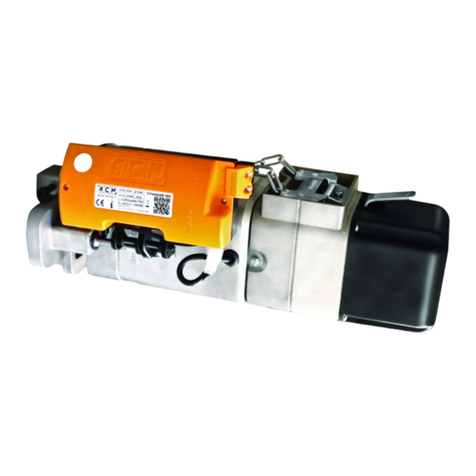
ACM
ACM TITANSIDE installation manual
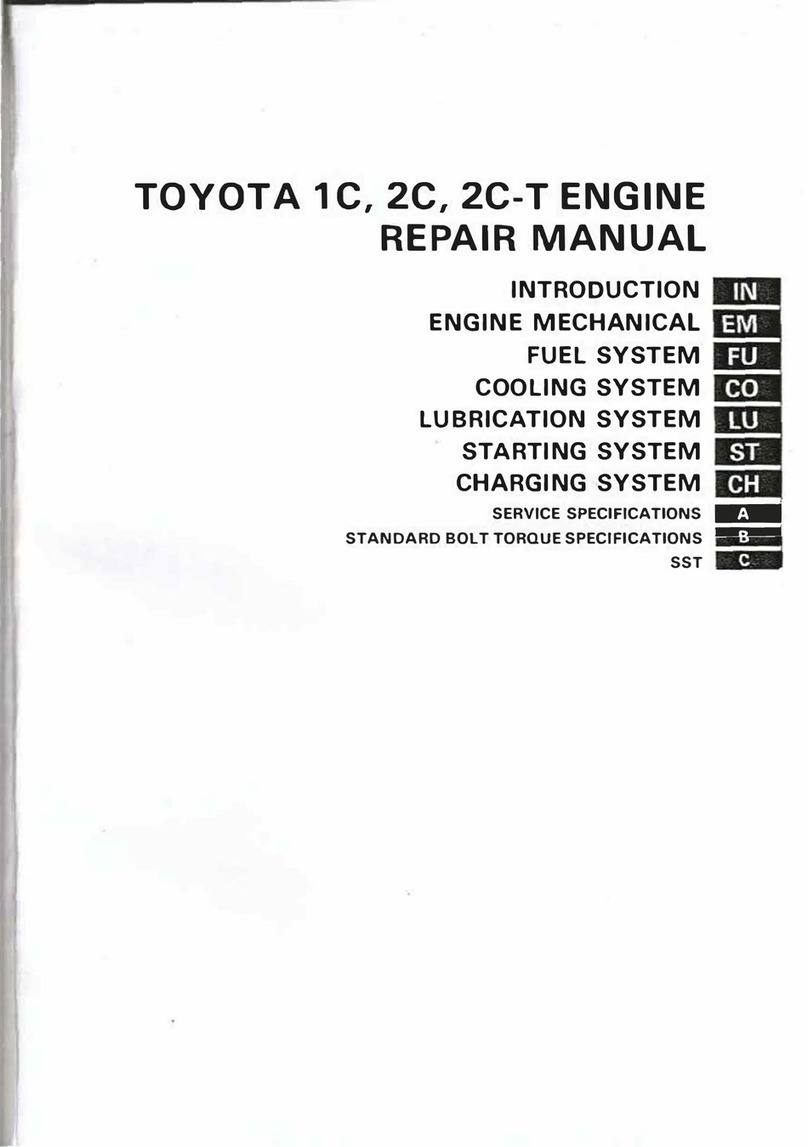
Toyota
Toyota 1C Repair manual

SEW-Eurodrive
SEW-Eurodrive R...7 Series Assembly and operating instructions
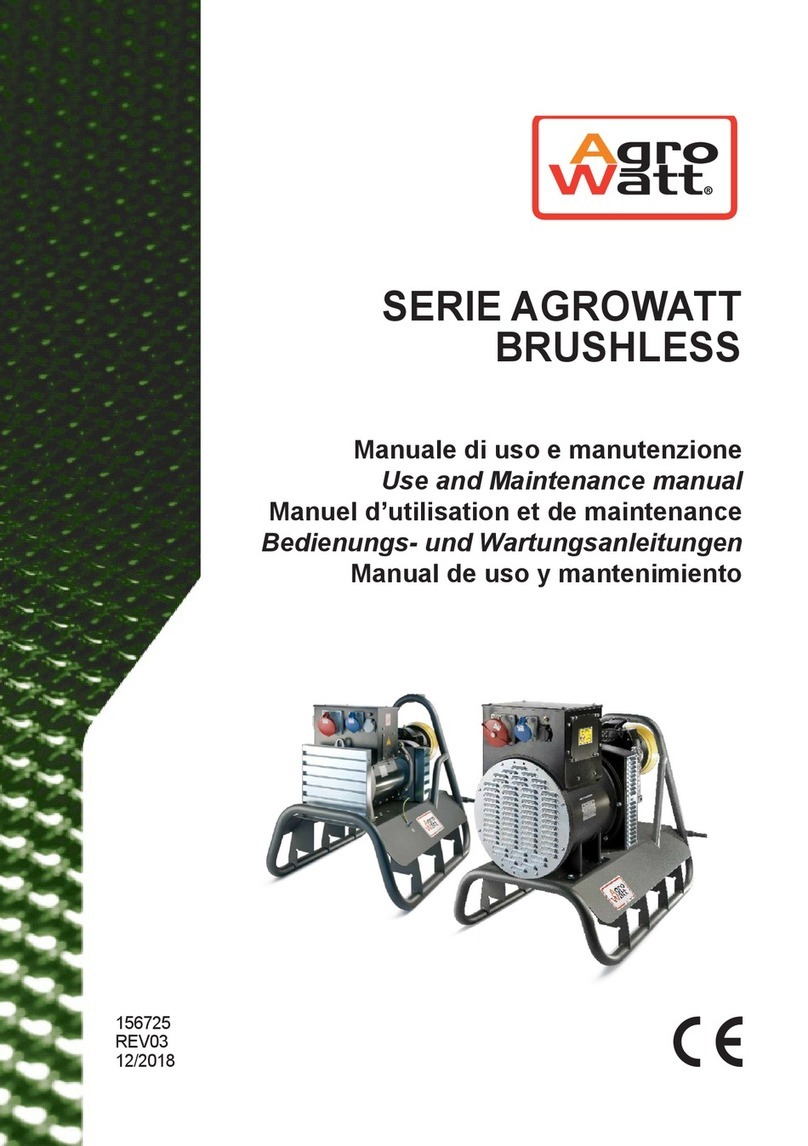
AGROWATT
AGROWATT AWB2-28 Use and maintenance manual

Briggs & Stratton
Briggs & Stratton Vanguard 290000 Operating & maintenance instructions
